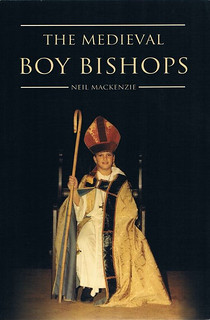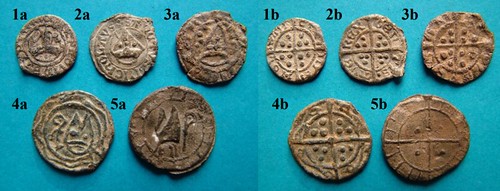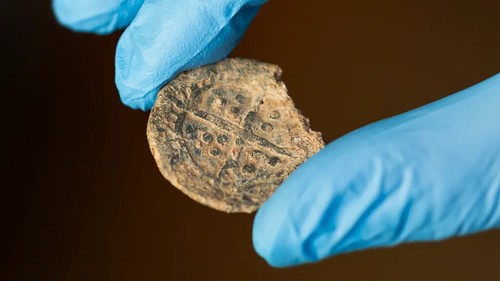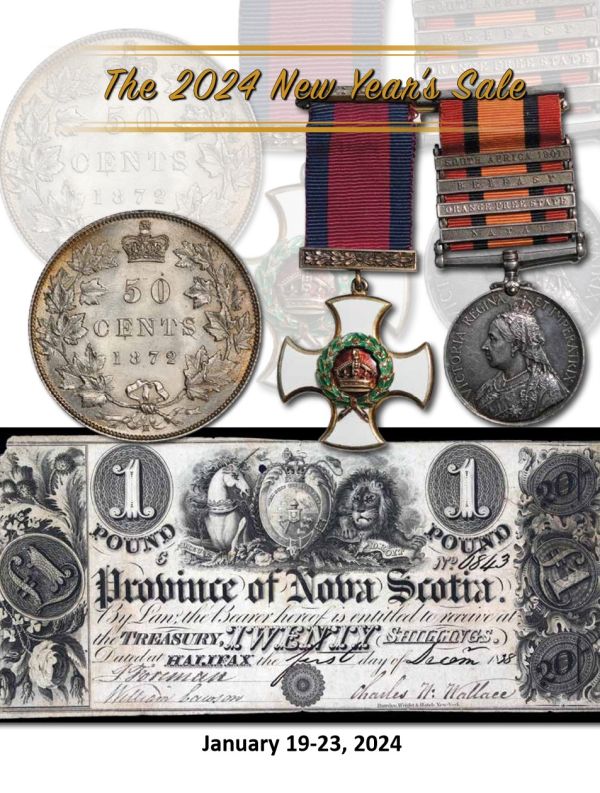
PREV ARTICLE
NEXT ARTICLE
FULL ISSUE
PREV FULL ISSUE
MORE ON BOY BISHOPS' CHURCH TOKENSDavid Powell kindly provided this information on the medieval Boy Bishops and their Christmas tokens. Thank you! -Editor
I have written a couple of pages on the subject in my lead token newsletter at LTT_128, pages 2-3 {see https://thetokensociety.org.uk/ltt/ }, and there are various examples illustrated elsewhere throughout the Leaden Tokens Telegraph {see specifically the display on the back page of LTT_88}, but Gary Oddie knows a lot more about the things than I do.
The Boy Bishop token coinage of East Anglia more closely approximates to regal money than any other lead issue, particularly in the early days c.1485-1500 when it was at its finest, and our main purpose, of course, is to ascertain just what role it fulfilled. Was it ceremonial money only, or was it used in lieu of real money and subsequently exchanged like, for example, pickers' checks? Perhaps the use of token coinage, rather than real money, was part of that control; having said which, we have no firm evidence for it having been deployed generally, beyond the area of East Anglia for which it is known. Not to say that it wasn't, of course; maybe some of the other known ecclesiastical lead and pewter tokens fulfilled the same role without us realising it. However, it is very possible that the use of tokens was local only to certain cathedrals' traditions. As regarding a catalogue, the 1984 article by Mitchiner and Skinner in BNJ54, pages 86-163 {see https://www.britnumsoc.org/publicns/bnj-articles-by-year } is the best I know to date; in terms of their type classification, Boy Bishops are types P and R. However, as with most lead, of the late mediaeval and early modern period, new types are being dug up all the time. Gary Oddie writes: "For the so-called Boy Bishop tokens - Daniel Haigh was the first to speculate that the lead tokens with bishop's mitres etc might have been used as part of the feast of St Nicholas (Num Chron, 1843, pp 82-90). The first, and so far only, catalogue of the type was written by Stuart Rigold (Proceedings of the Suffolk Institute of Archaeology and History. 34(2) pp87-101. 1978, with a couple of later supplements). Michael Mitchiner's catalogues derive from these. "There is no documentary evidence for the use of the tokens during the feast of St Nicholas and they were more likely issued by the larger religious establishments as alms or small change. Indeed the cult of St Nicholas was commonplace across Northern Europe and all of England (T. Skambraks; Das Kinderbischofsfest im Mittelalter, 2014), whereas the tokens that fit this type are exclusive to East Angla. When I last looked, the Portable Antiquities Scheme had listed over 500 "Boy Bishop" tokens from East Anglia along with 20 or so outside this area that are all misidentifications. "Rigold's listing can now be extended to include lead halfpennies and some much larger pieces as well as several new legend types and portrait pieces." Very interesting! Thanks, everyone. -Editor
To read the earlier E-Sylum article, see:
Wayne Homren, Editor The Numismatic Bibliomania Society is a non-profit organization promoting numismatic literature. See our web site at coinbooks.org. To submit items for publication in The E-Sylum, write to the Editor at this address: whomren@gmail.com To subscribe go to: https://my.binhost.com/lists/listinfo/esylum All Rights Reserved. NBS Home Page Contact the NBS webmaster 
|



